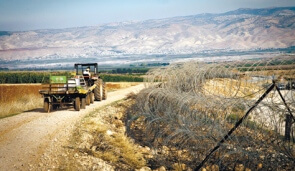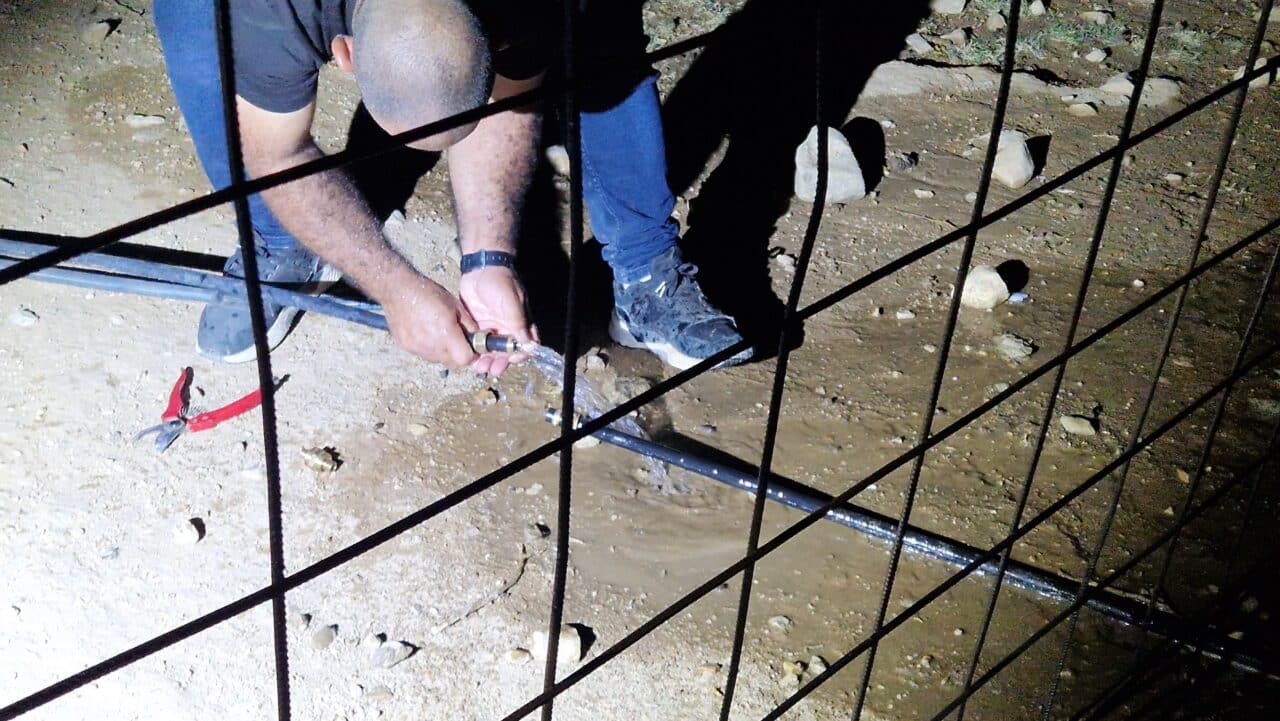Israel effectively annexes Palestinian land near Jordan Valley
Separation barrier route in Kibbutz Merav area changed leaving 1,500 dunams on Israeli side; may be first transfer of Palestinian-owned land to community on sovereign Israeli territory.
Israel carried out a de facto annexation of Palestinian land northeast of the Jordan Valley and given it to Kibbutz Merav. Merav, part of the Religious Kibbutz Movement, is about seven kilometers northwest of the parcel.
The route of the separation barrier in the area was changed so that the plot in question, about 1,500 dunams (375 acres), would be on the Israeli side.

Israel has previously built roads on and given Palestinian land in the West Bank to Jewish settlements, but this is thought to be the first instance of Palestinian-owned land being transferred to a community on sovereign Israeli territory.
A spokesman for the Coordinator of Government Activities in the Territories, Maj. Guy Inbar, confirmed that the property is in the West Bank and said, “Kibbutz Merav has been farming this land for decades.”
The issue of the land’s legal status and its transfer to Merav is clouded in mystery, and official statements have been contradictory. All efforts to locate documents explaining the situation have failed, Inbar said.

The kibbutz is in the Emek Mayanot Regional Council, whose jurisdiction is entirely within the Green Line. In a statement, council officials said the land is beyond its jurisdiction and that the Israel Lands Administration controls land allocations to the council’s member communities.
Ofer Amar, a spokesman for the World Zionist Organization’s Jewish settlement division said the tract is classified as farmland within the Emek Mayanot Regional Council. He said the settlement division had no authority over the parcel.
Kibbutz Merav’s secretary general, David Yisrael, confirmed the kibbutz has been farming the land for years, growing field crops including corn as well as citrus fruit. He said he had a lease with the ILA for it, but refused to show it to Haaretz.
An official in the Civil Administration said Yisrael refused to show the contract to his agency, too.
ILA spokeswoman Ortal Tzabar said the ILA had no knowledge of the matter, as it does not deal with land outside sovereign Israeli territory.
“There is a straight line from plundering these 1,500 dunams to Amona, Migron and Givat Asaf, outposts that were built years later,” said Dror Etkes, who has been researching construction in the settlements for several years and detected the annexed land in aerial photographs.
If the appropriation of the Palestinian farmers’ lands in the Jordan Valley had happened now, rather than in the 1970s, Israeli civil rights groups would have prevented it, Etkes said.
“This is an example of why it so important for MK Ofir Akunis and his wacky right-wing colleagues to conceal and silence leftist organizations and turn the High Court of Justice and the media into the government’s puppets,” Etkes said.
Ashraf Madrasa, from the nearby village of Bardallah, showed Haaretz an ownership deed from 1961 for a 36-dunam tract of the land. He said the Israel Defense Forces seized the land, declared it a “military area,” drove out the owners and ordered never to return.
A number of landowners were given alternative plots belonging to “absentee” Palestinians who fled during the 1967 Six-Day War. Sami Rajab, whose family farms in the area, said that in exchange for several plots in the area he was evicted from, his father received a tract that belonged to his uncle, who emigrated to Canada.
Recently his cousin came to visit and demanded his lands back, Rajab related. “We told him he had to ask the Israeli government to give it back to him,” Rajab said.
According to international law Israel is the custodian of absentee property in the West Bank and is prohibited from giving it to settlers, not to mention to communities within Israel.
In an opinion issued in 1997, the Civil Administration’s legal adviser said: “The Custodian of Absentee Property in the West Bank is nothing but a trustee looking after the property so it is not harmed while the owners are absent from the area … the custodian may not make any transaction regarding the asset that conflicts with the obligation to safeguard the asset as stated, especially his obligation to return the asset to the owner upon his return to the region.”
The state comptroller wrote in a 2004 report that thousands of dunams of privately-owned Palestinian lands were given to Israeli communities in the Jordan Valley in the 1960s and 1970s, according to ILA and Custodian of Absentee Property documents.
The ILA continued “these allocations, defined in the above documents as apparently illegal, after that as well,” he wrote.


